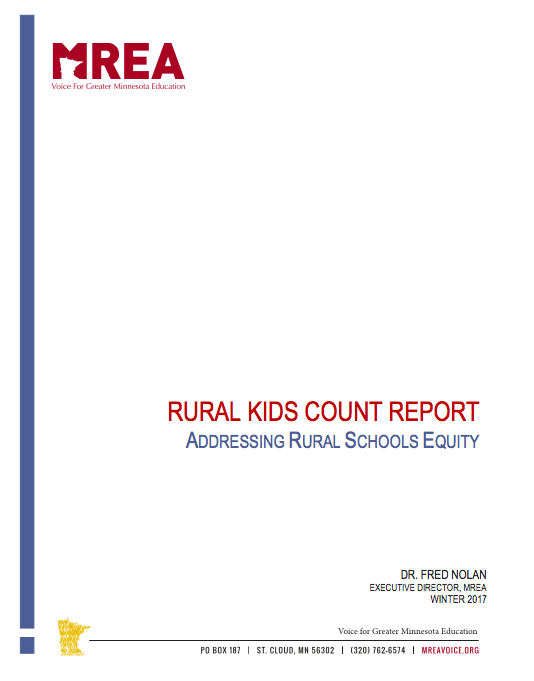Addressing Rural School Equity
Upon the request of legislators from both parties, MREA analyzed school funding for districts in rural areas compared to those in urban areas in Minnesota to assess how the funding is meeting the needs of all students.
The report, released in January 2017, found that Minnesota’s rural schools of all sizes trail behind the state’s urban schools in per student funding.
- Wide metro-rural divide in school funding per pupil.
>> The 15 school districts in the central cities and inner ring suburbs receive nearly $1,400 more per pupil than the average of the state’s other four tiers.
- Two funding sources account for one of the largest gaps.
>> Nearly 40 percent of rural school districts in Minnesota receive $724 or less per Adjusted Pupil Unit (APU) from of Local Optional Revenue (LOR) and Operating Referendum. That’s nearly half the state average of $1,303 per APU.
KEY STRATEGIES
Ensuring all students receive a quality education across Minnesota can be made possible through combined education funding and tax relief strategies that include:
>> Foundation And Incentive Revenue (FAIR) would start every school district with $200,000, which is multiplied by the ratio of the district’s three-year rolling average of 8th grade MCA reading and math scores divided by the state’s three-year average. The result is a median revenue of $184,000 per district, and a median of $190 per ADM. View map of impact. View issue brief on FAIR.
>> Ag2School would offset an inequitable amount of school facility funding provided by farmers by creating a 40 percent credit on the taxes paid on farmland for school bonds. View map of impact. View issue brief on Ag2School.
>> Enhanced Local Optional Revenue (E-LOR) would increase the equalization factors and LOR by $226 to $650 per Adjusted Pupil Unit (APU) over a three-year period without any referendum subtraction. When equalization is increased proportionately, the first-year net statewide levies can remain level—no increase. View map of impact
>> Restored Debt Service Equalization (DSE) would reduce the threshold from 15 percent of Adjusted Net Tax Capacity (ANTC) to 12.5 percent. The equalization system would be replaced with one tier at 100 percent of average modified Adjusted Net Capacity (ANTC) per Adjusted Pupil Unit (APU) with 50 percent of Ag land values used for equalization purposes as is done for Long-Term Facility Maintenance (LTFM). View map of impact
>> Increased Tier III Equalization for rural and property poor school districts would be most effective with a significant increase to the Tier III equalization factor to $450,000 Residential Market Value (RMV) per Resident Pupil Unit (RPU). View map of impact
MORE RESOURCES & RUNS
Download the Rural Kids Count Report with maps, charts and more details on the gap and key strategies to ensure equitable funding for all students in Minnesota.
Complete the form below to get full runs showing the impact by school district for:
- Foundation And Incentive Revenue (FAIR)
- Ag2School
- Enhanced LOR (E-LOR)
- Debt Service Equalization





